TRCP’s new Oregon Field Representative, Tristan Henry, looks back on a recent chukar hunt and forward to the work that must be done to safeguard this iconic landscape
While reminiscing about a recent chukar hunt in the Owyhee Canyons and my new role as the Oregon field representative for the Theodore Roosevelt Conservation Partnership, I was reminded of a quote penned by Walt Whitman almost 150 years ago:
“As to scenery, while I know the standard claim is that Yosemite, Niagara Falls, the Upper Yellowstone, and the like afford the greatest natural shows, I am not so sure but the prairies and plains, while less stunning at first sight, last longer, fill the esthetic sense fuller, precede all the rest, and make North America’s characteristic landscape.”
I’d have to agree with old Walt. I’ve been lucky to spend many days in the field chasing chukar, hunting mule deer, and throwing dry flies and streamers across the vast expanse of public lands that constitute southeast Oregon’s Owyhee country. It’s a rare treat to sip coffee with a bird dog by your side around a morning fire as you watch the first burst of sunlight rise above the Owyhee plateau. Out there, in sagebrush-covered solitude, it can be tempting to want to save the last best places for ourselves, but sharing it is something far more powerful.
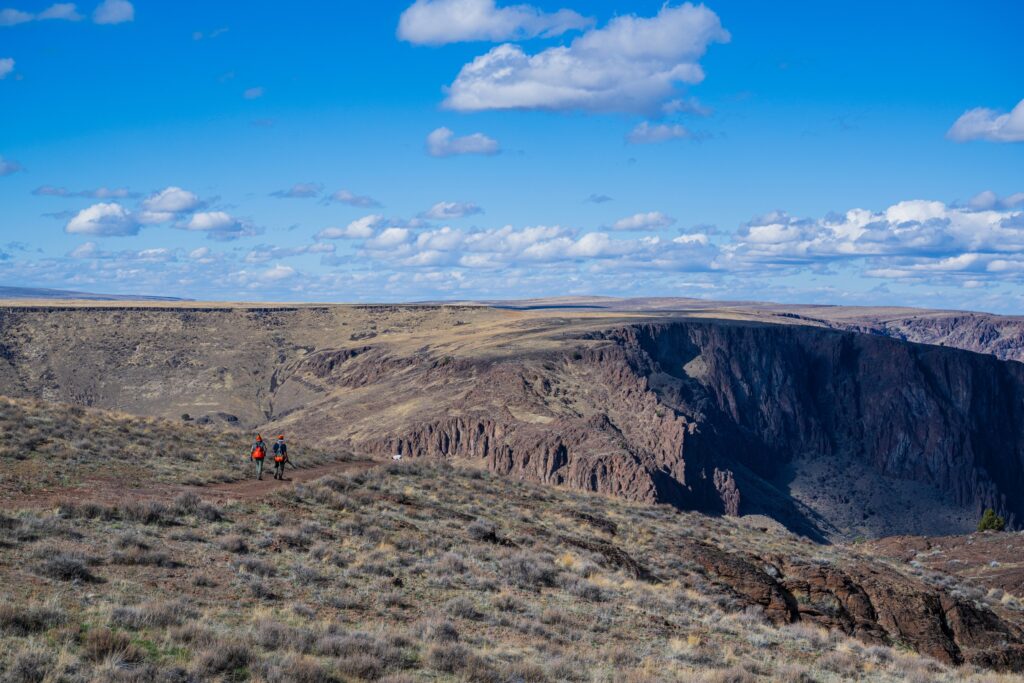
A Community Camp
In late October of last year, I joined a group of hunters and photographers for a few days to camp, hunt, and capture images and stories about this remote and beautiful canyon country. A few in our group were lucky enough to experience the Owyhee for the first time: Sav Sankaran of the Orvis company and Durell Smith of the Sporting Life Notebook had loaded their truck more than 2000 miles away and drove 31 hours for their first shots at wild chukar with renowned outdoors photographer Brian Grossenbacher there to capture the moment. Conservation staff and local members of the Owyhee Sportsmen and their families rounded out our camp, and I can say with a great deal of confidence I would share a fire with all of them any day.
We camped in as stunning a desert campsite as I have ever seen. At the confluence of several streams, mallards circled, redband trout finned, and after a frigid night, we woke to cowboy coffee and the sound of chukar greeting the sun from the rimrocks. We discussed our strategy for the morning hunt with scalding bacon that hardened quickly in the morning cold. After the dogs were collared, we drove out of the canyon in the direction of those distant “chucking” partridge. Shutting the tailgate, I heeled my dog, beeped his collar, and began walking westward through sage and rimrock.
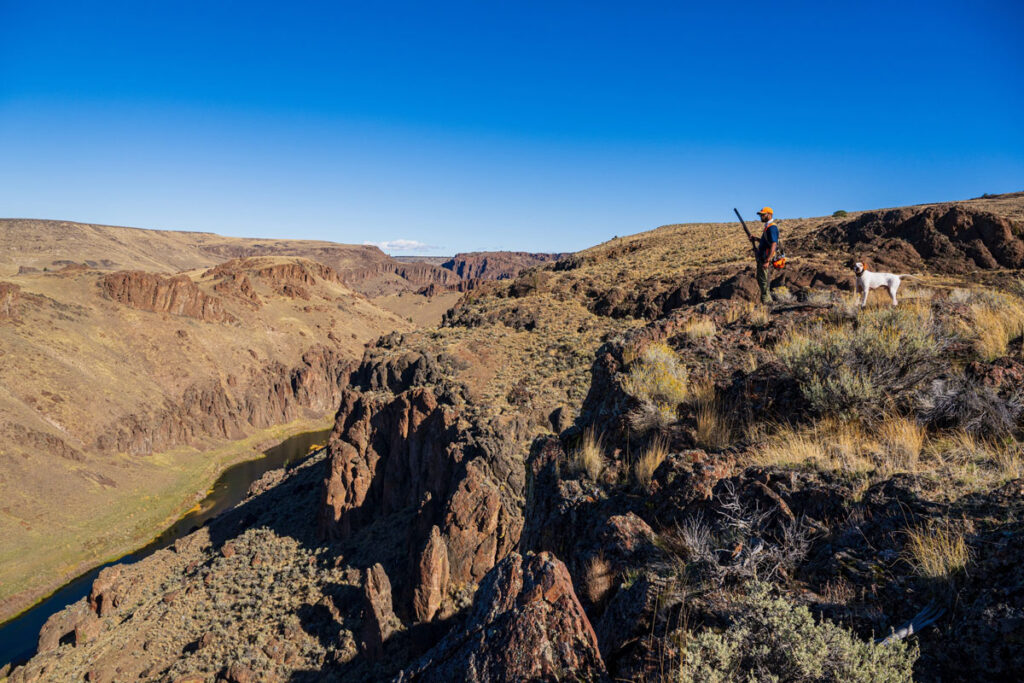
“It’s a rare treat to sip coffee with a bird dog by your side around a morning fire as you watch the first burst of sunlight rise above the Owyhee plateau.”
Sturgil, my 4-year-old wirehair, and I had shared some incredible days in the early weeks of Oregon’s upland season, and though this one started out a mess, we ended on a string of high notes. Birds were plentiful and I walked back to the truck with a heavy vest and one sequence etched proudly in my mind: A productive point, the approach, and a cloud of sixes finding a bird.
After a particularly wet spring brought much needed moisture to the thirsty high desert of the northern great basin, it was easy to see glimmers of that once-healthy rangeland. The weight in my vest was tangible proof of the productivity of the place, but thousands of acres of cheatgrass, medusahead, Russian thistle, and knapweed remind us just how much more needs to be done to protect the Owyhee.
Back at camp, we exchanged stories of the day over bourbon and under a star-filled sky. With a shared love for birds, bird dogs, and a thirst for community in wild places, we traversed our memories, each ridge and valley telling a story of survival and adaptation. As hunters, I suppose we’re used to navigating the thin margin between abundance and austerity, and we may be uniquely experienced in finding hope where others see desolation. There’s proof enough of that in the photos. These moments captured the stark magic of the Owyhee just about perfectly.
So few places in the U.S. offer such a complete escape from the hustle and bustle of daily life that one can truly lose oneself in nature. Fewer still offer all this splendor while also supporting grazing, hunting, fishing, and a myriad of other multiple-use purposes, but the Owyhee does. As a lifelong Oregonian and hunter, I’ve come to understand that safeguarding such places is not just an environmental imperative: it’s a moral one. It is our duty to ensure that future generations can experience the same sense of connection and awe that we find while walking in on a point.
Learn more about the Owyhee Sportsmen and how you can help protect the Owyhee Country HERE.
And learn more about TRCP’s work in the Pacific Northwest HERE.
Photo credit: Brian Grossenbacher

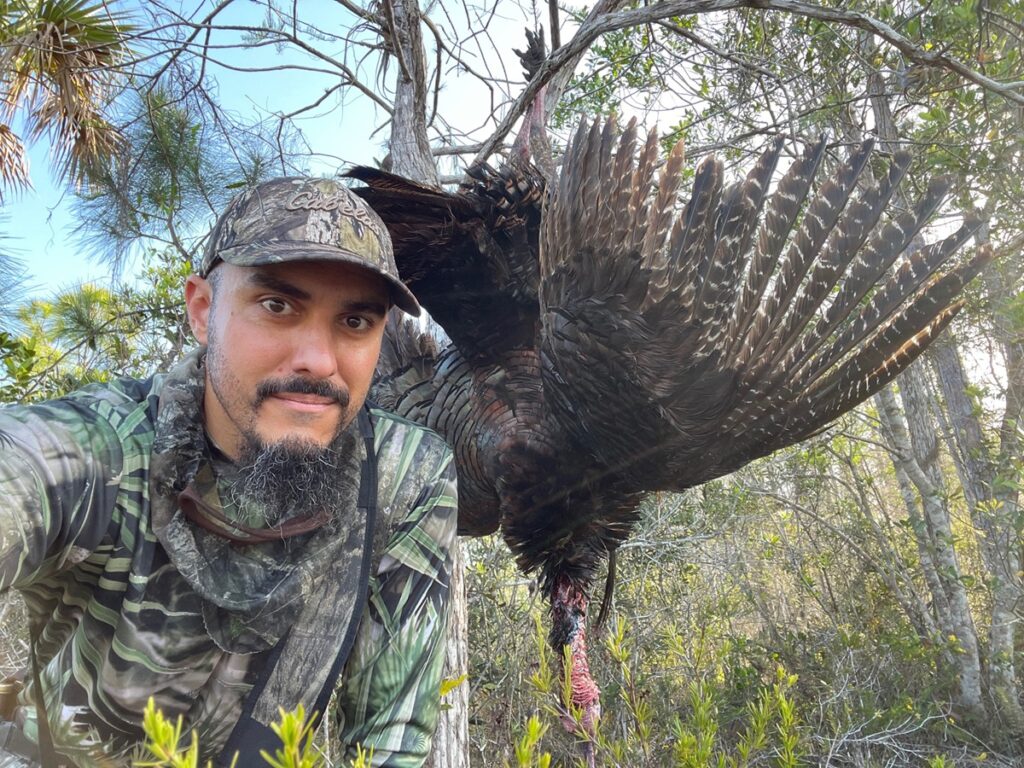
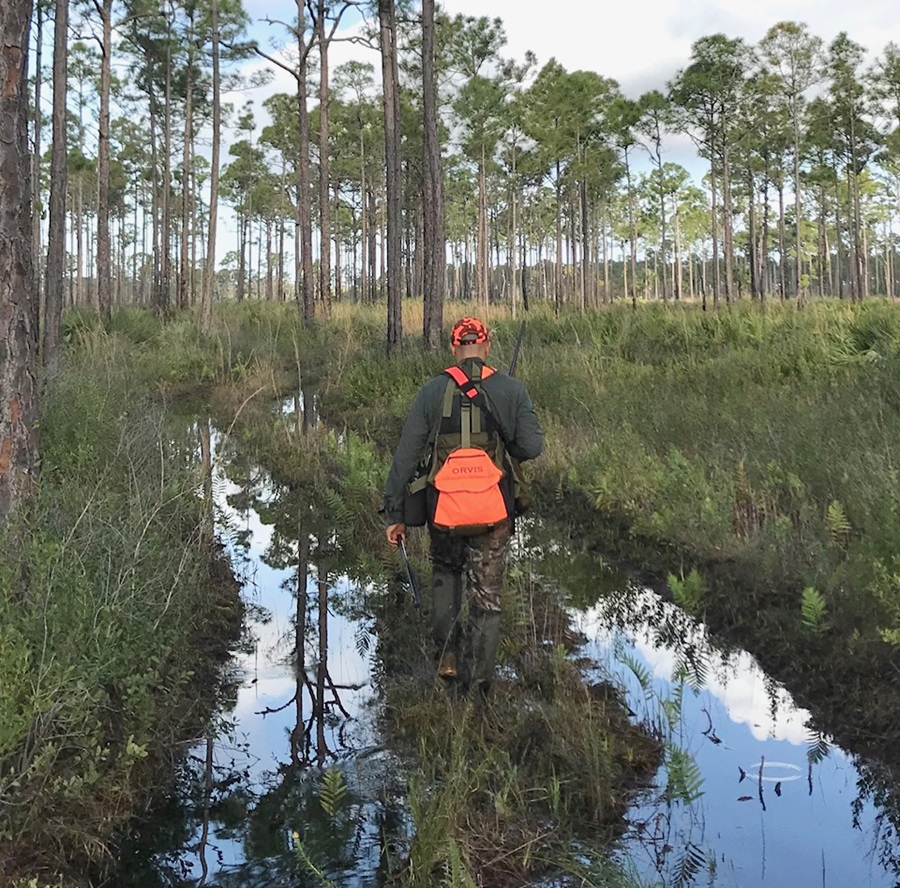
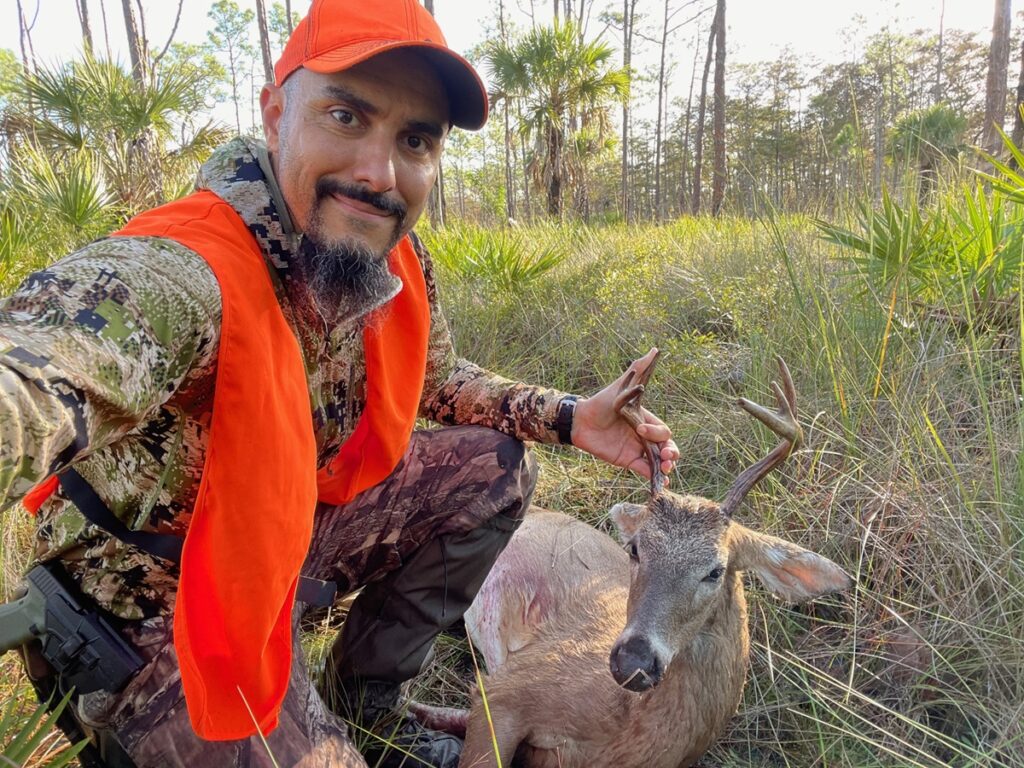
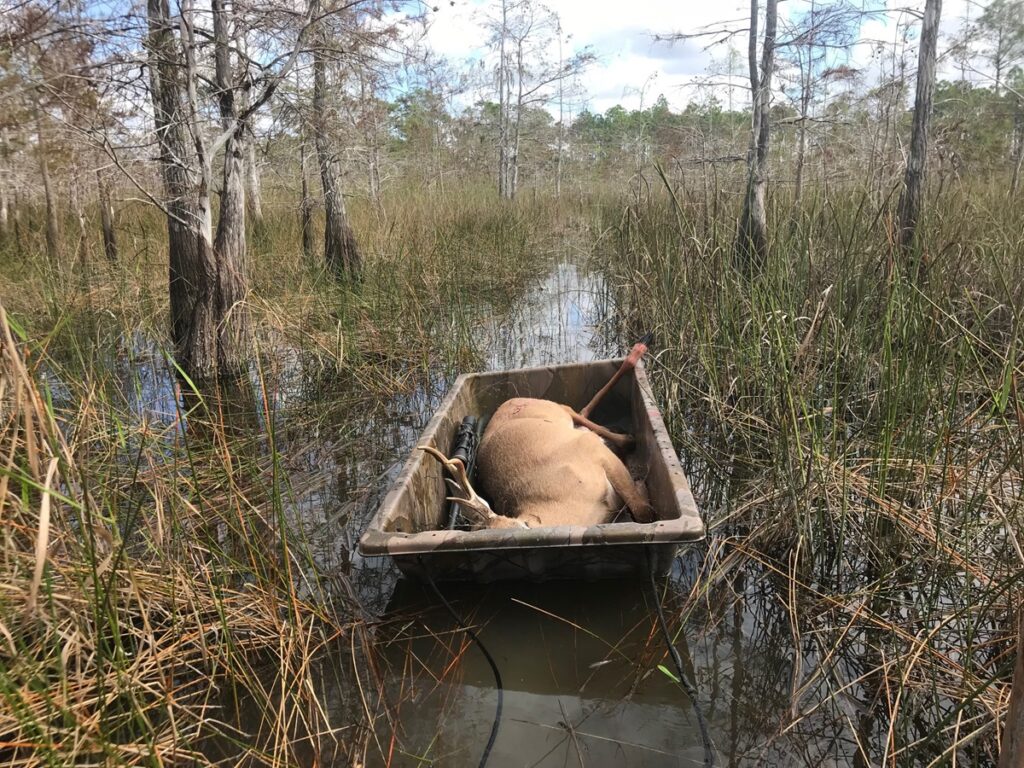

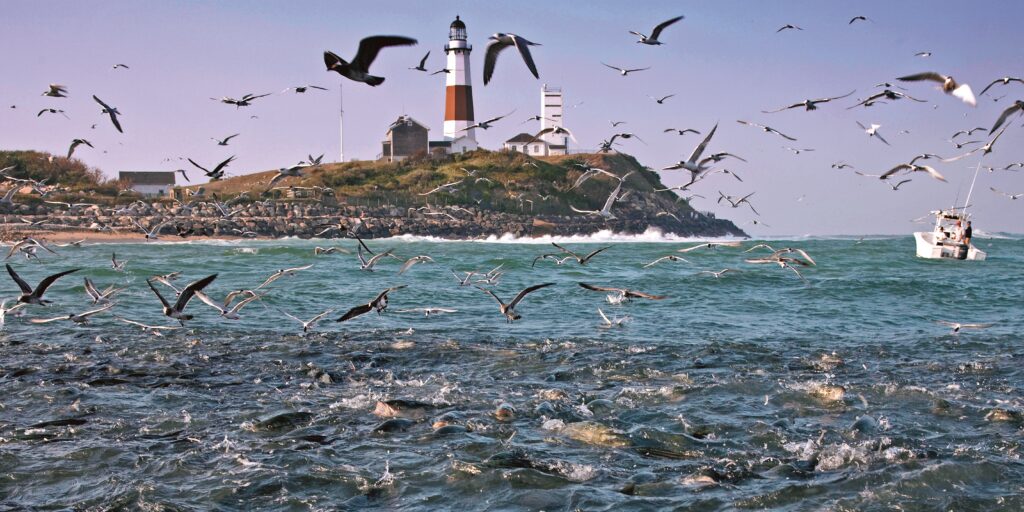
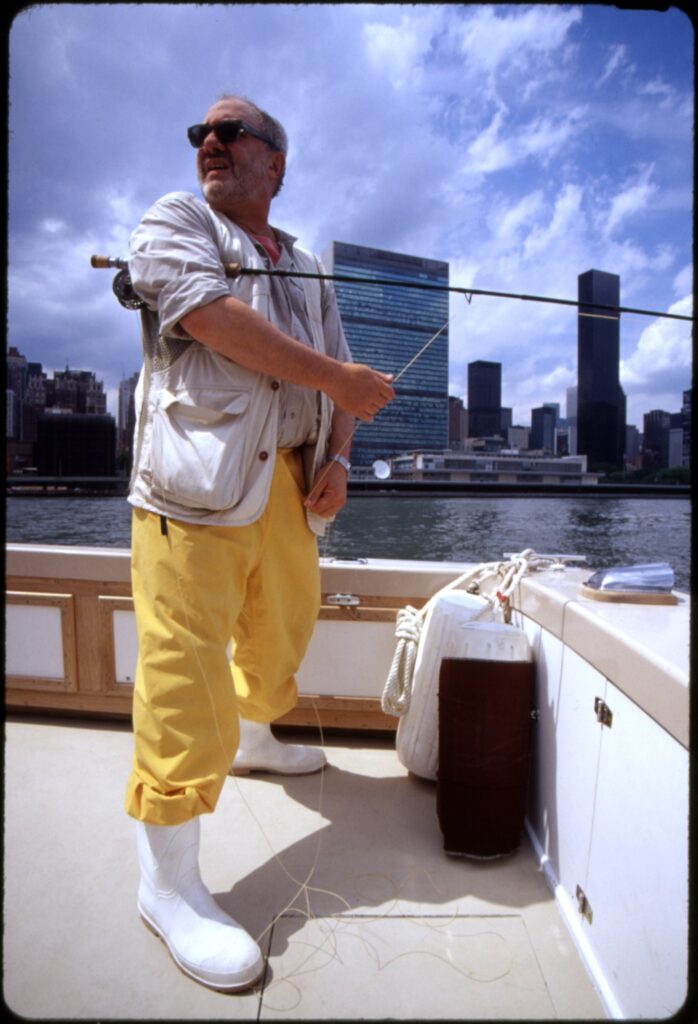
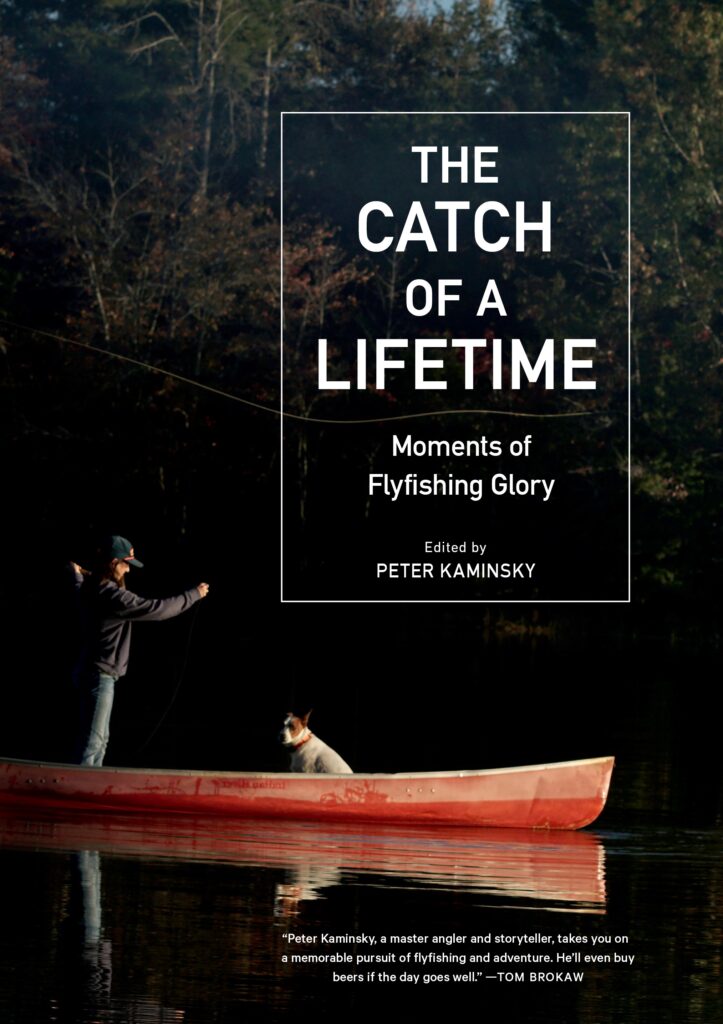
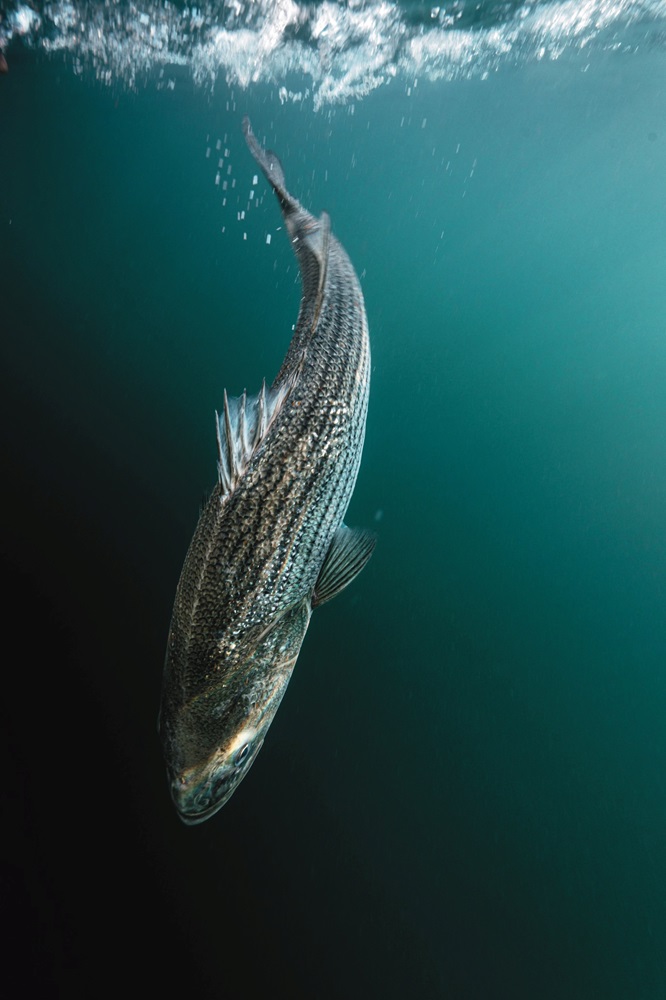
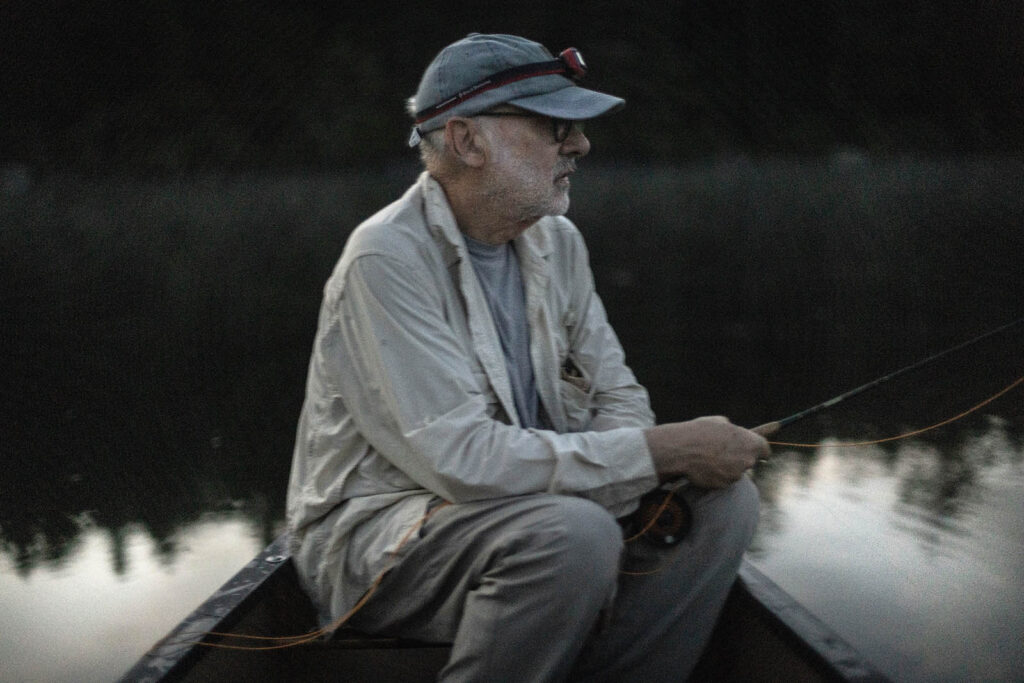




I have been enjoying this territory for 60+ yrs. and I could not agree more with the article regarding protections for this area. The ecosystem has been abused and subjected to less than stellar land management and now the recent stressors of rapid population growth and motorized recreation are presenting challenges never before encountered by our land managers. I hope that your group takes a leadership role in guiding the outdoor recreation industry and all users into taking serious aggressive action to address Rapid Climate Change. The land managers have the climate adaptation plans ready for implementation they just need help from our publics. The Owyhee area is unique in this era and we would be remiss in our moral obligations to not try to ensure that future generations have access to this national asset.